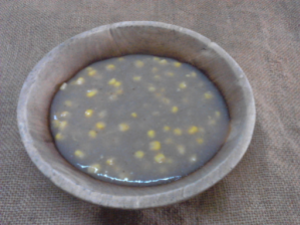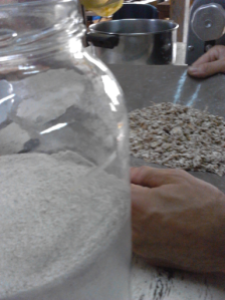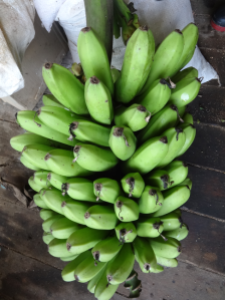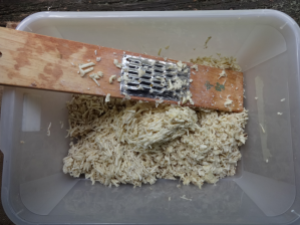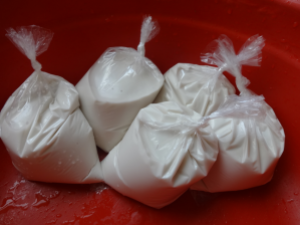
Oh it’s a horrible, grey muggy day today!!
Gnome admonishes me and says, “Stop complaining, Babes…”

And I reply, “It’s not a complaint! It’s a description!!”
It is really grey. It is really muggy. 🙂 Ha-Ha, one must keep up the humour especially during these times and use emoticons to show that everything is really in the greatest humour possible!! 🙂
Well anyway(s), here are a few small things to show you what’s happening.
Since my Mabe cooker done broke and I don’t have an oven, we are resorting to our old “tried and tested” methods again. Back to the Dutch oven and cooking over coals. We had a stash of Fray Bento meat pies from British Foods Belize so we decided to cook them traditional style. They puffed up very nicely (a lot better than the conventional oven) and they are a little burnt since we haven’t cooked like this for a while. These were a nice Sunday afternoon treat. Also, the fire kept the bugs away for a while which was a welcome break.

This is a vegetable that grows on a vine which we have planted up the side fencing of the Duckie Zen coop. The best way to describe them is that they taste like firm, little cucumbers but they have to be cooked. They are growing prolifically with all the duckie fertilising so we are harvesting a basket of these each day. I’ve mostly been steaming or putting them into soups and stews. This vegetable is called tindali (a vegetable of Indian origin)and was obtained from the Spice Farms in Toledo (courtesy of Dr Mathew).

Oh, and it’s Mango Season again! This is the chance to stuff yourself with Mango everyday…it’s great. There should be a Mango Festival down here at this time of the year; it is definitely worth celebrating!

A while back I tried to make some home-made senbei (Japanese rice crackers). I used ordinary glutinous rice flour because that was all I could find. The final result was that they were chewy (still tasted good) but not the usual crunchiness that you would expect from these type of crackers. After discussing with Gnome (and reading Wiki entries) we realised that the Mochiko flour that is traditionally used is cooked (not raw) rice that has been dehydrated and then ground into a fine flour which then gives the crunchy quality to the food. So you can’t get Mochiko flour for love nor money in Belize (!) so Gnome says that when we get really bored (ie. during the rainy days when we can’t get out) he will help me make the flour. Watch this space…it will probably take about 72 hours to make the flour by hand!


Keep well everyone and keep on going despite the weather!! Well, we’ll keep on going because we like to think that we are cool and tough…Ha-Ha!!











